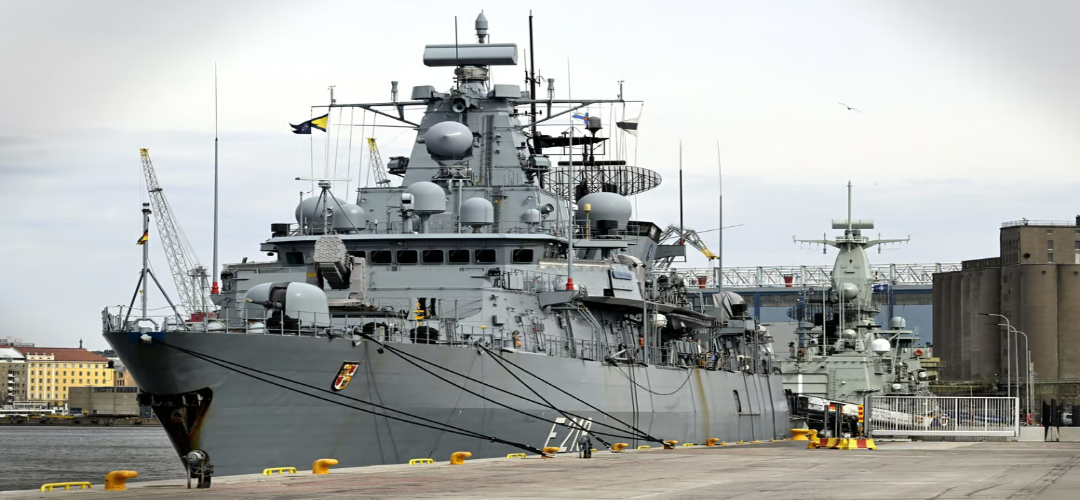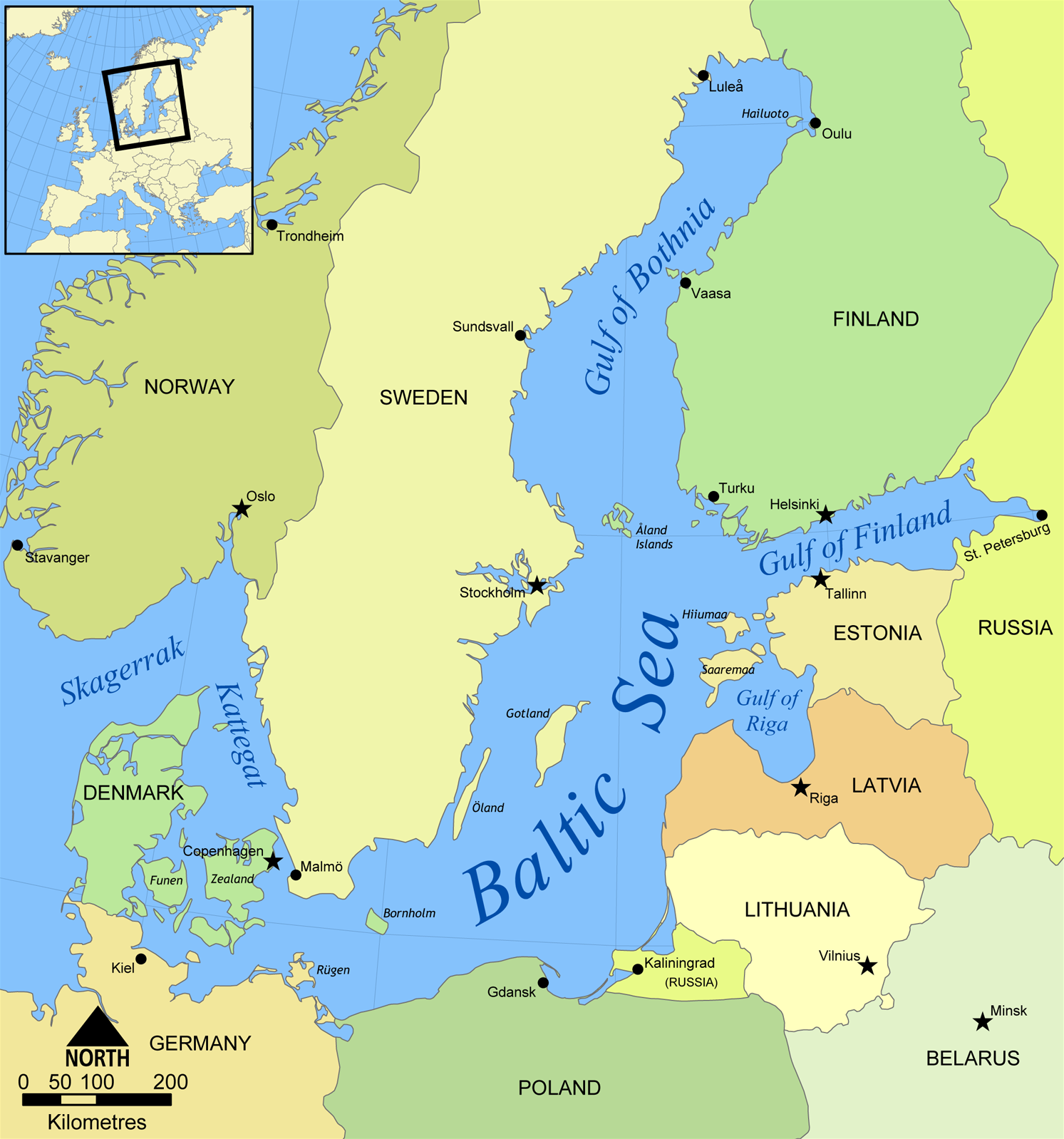Baltic: A NATO Lake?
April 6, 2024 | Expert Insights

Sweden’s NATO membership has gone from being stalled by an affronted Turkey and a pro-Russia Hungary to finally being approved. With Sweden now having thrown its lot unambiguously with NATO, has Russia created a situation for itself that will further corner it in Europe? The implications are wide-ranging and must be carefully assessed and calibrated by all stakeholders.
Background
Sweden is bidding goodbye to 200 years of neutrality and a non-aligned military stance. It is no surprise that its shift in stance came soon after Russia invaded Ukraine in 2022. It joined Finland, Russia’s tiny neighbour and a former military rival, in seeking security within the folds of the NATO military alliance to ward off a resurgent Russia under President Putin.
However, it was not a decision made in a rush; for decades, Sweden had been in cohorts with NATO, sharing intelligence and know-how and even training with them on the sly. Politically, the ground for an eventual accession into NATO had been prepared for years. A clear example was the deal signed last December, which gave the U.S. military access to 17 of its military bases.
Sweden has benefited from decades of neutrality, and even during World War II, it made a profit selling minerals to both sides; now it is faced with the dreadful possibility of facing up to a giant, powerful neighbour at war with almost the entire Western world. Having mostly dismantled its ground forces at the end of the Cold War, it has much catching up to match up to stringent NATO standards. Fortunately, it has a thriving defence industry turning out sophisticated Grippen Jet fighters and the unmatched 'S' Tank. While its army was pruned down, its air force and navy remained powerful. As a NATO member, it will now have to increase defence spending to meet the requirement of 2% of GDP.
The Baltic Sea, a strategic waterway, connects Russia with Europe and is not just a key oil route for Russia but is also bordered by some of NATO's most vulnerable members and Russia's St. Petersburg. It is an important gateway for a Russian fleet with bases near St. Petersburg and the highly militarized Kaliningrad area.

Analysis
Between the two, Sweden and Finland can choke Russian naval forces from the Baltic Sea, Russia's shortest maritime access to the Northern Atlantic. With Sweden dominating the Western shores and Finland and other NATO members on the Eastern shore, the powerful Russian Baltic fleet can get bottled up in these narrow waters. During the Cold War, Denmark and Germany were the only NATO members at the western margin of the Baltic. Subsequently, Poland joined in 1999 and amongst the three Baltic countries, most of the southern Baltic coast was under NATO. In this way, NATO steadily extended its Baltic presence over the years. Finland and Sweden will now close the circle on the north and curtail Russian access.
With Finland and Sweden on NATO's side, the Baltic Sea is no longer neutral, and NATO has gained a key edge over the waterway. Its substantial Baltic Sea presence could bolster its efforts to fend off Russia from the historically exposed Baltic states.
Many analysts have posited that the Baltic Sea, particularly its small Swedish island, Gotland, could be key to a potential Russian attack on Europe. After the Cold War ended, Sweden demilitarized the island. Now, it's rapidly re-arming and fortifying it. Gotland Island could serve as a useful military base and help deter and defend against a potential attack since it controls entry into the Baltic Sea. With the help of Sweden and Finland, it will be easier to restrict the Russian navy in the Baltic Sea. Sweden could play an important role in guarding the Baltic and Kaliningrad airspace and serve as a staging ground for NATO and U.S. troops.
In addition to Gotland, the alliance gains access to Sweden and Finland’s thousands of miles of Baltic Sea coastline. Now almost surrounded by NATO countries, it is effectively a “NATO lake”.
Further, with Finland and Sweden, the combined extensive border with Russia provides an opportunity for NATO forces to operate along the flanks of Russian military operations. Russia will now have to deal with an enlarged NATO presence close to its borders.
For NATO, it’s not just a substantial geopolitical win that isolates Russia further but also a military win in terms of sheer firepower addition. Sweden, a large, wealthy nation, brings an advanced military and a robust defence industry that produces hi-tech planes and naval vessels designed to operate in the challenging Baltic Sea environment.
Finland and Sweden’s membership also expands NATO presence along the Arctic, an increasingly important region for both Russia and China. For years, Russia has been ramping up military infrastructure in the region. This could help NATO keep an eye on the High North region. It would be relevant to mention that Russia maintains around two-thirds of its second-strike nuclear weapons in the area, based on the Kola Peninsula.
Assessment
- The inclusion of Sweden has entirely changed the dynamics of the Baltic Sea. Pushed to a corner, Russia has threatened to nuclearize it, a step that could invite a matching response from the nuclear-weapon states of NATO. The grim vision of the erstwhile picturesque coastline of the Baltic Sea bristling with nuclear-tipped missiles gets dangerously close to reality as the security situation in Europe deteriorates. This does not portend well for global stability.
- While the West may point at the Russian invasion of Ukraine as a catalyst for this significant expansion, the Kremlin may disagree. It would say that this was an eventuality waiting to happen, and now that things are in the open, it can prepare its counter accordingly. However, how this strategic brinkmanship actually unfolds remains to be seen.
- Despite its garb of neutrality, Sweden has been collaborating with NATO for decades, and what has happened now is just a formality. Russian strategic planners would have anticipated and accommodated it in their strategic calculus. They also know that just by joining NATO, the balance of power in the Baltic Sea does not shift; unless NATO moves more of its military infrastructure into that country, it changes little from the Russian perspective.








Comments